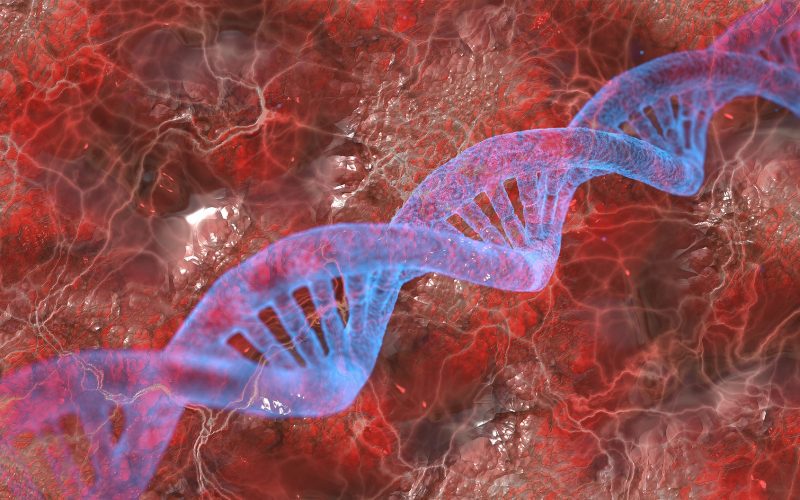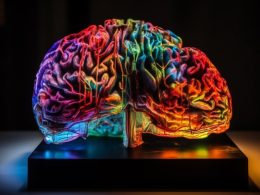Unraveling the mysteries of science is often a complex process, and Rosalind Franklin’s work on DNA is no exception. Despite her significant contributions to the field, there are still many misconceptions surrounding her groundbreaking research. In this blog post, we will untangle the truth about Rosalind Franklin and dispel common myths about her work on DNA. We will delve into what she discovered that led to her breakthrough discovery, explore the consequences of her findings, investigate how Franklin’s death impacted her legacy, and discuss what we can learn from this remarkable scientist’s story about the importance of critical thinking in scientific research. So let’s dive in!
What did Rosalind Franklin discover that led to her breakthrough discovery?
Rosalind Franklin was a British biophysicist whose work on X-ray diffraction played a crucial role in the discovery of DNA’s structure. In 1952, her lab produced an X-ray image that became known as Photograph 51, which revealed the helical structure of DNA. This was a groundbreaking discovery because it provided evidence to support James Watson and Francis Crick’s proposed model for the double-helix structure of DNA.
Franklin’s contribution to this breakthrough discovery did not end with just one photograph. Her rigorous experimental methods and expertise in crystallography allowed her to construct detailed three-dimensional models of molecular structures. She conducted numerous experiments to gather data about the physical properties of DNA fibers, such as their thickness and spacing between atoms.
In addition, Franklin also discovered that there were two forms of DNA: A-form and B-form. The B-form is the one Watson and Crick used when they made their final model for what we now know as the double helix.
Her research laid much groundwork for future discoveries in genetics, molecular biology, biotechnology, medicine-to name just a few areas influenced by her work-which earned Rosalind Franklin an enduring place among history’s most brilliant scientific minds.
What were some of the consequences of her discovery?
Rosalind Franklin’s discovery of the structure of DNA had a profound impact on the fields of genetics and molecular biology. One major consequence was that it paved the way for future research in these areas, leading to countless breakthroughs in our understanding of genetic diseases and other biological processes.
Additionally, her work highlighted the importance of using advanced imaging techniques to study biological molecules. This approach has since become standard practice in many areas of science, and is critical for gaining insights into complex structures such as proteins and viruses.
Another consequence was that Franklin’s discovery challenged prevailing theories about DNA at the time, particularly those proposed by Watson and Crick. By showing that DNA was not simply a single helix but rather a more complex structure involving multiple strands, she forced scientists to reevaluate their assumptions about how this molecule worked.
Franklin’s legacy serves as an inspiration to young women pursuing careers in science. Despite facing significant obstacles due to gender discrimination during her lifetime, she continued to push forward with her research and ultimately made groundbreaking contributions to our understanding of genetics. Her story shows us that perseverance and determination can overcome even the most daunting challenges.
How did Franklin’s death impact her legacy?
Rosalind Franklin’s death at the age of 37 from ovarian cancer cut short her scientific career and left many wondering what else she could have accomplished. Despite this premature end, her contributions to science are still celebrated today.
Franklin’s untimely passing in 1958 meant that she was not able to receive the recognition that she deserved for her work on DNA. It wasn’t until after her death that James Watson and Francis Crick published their seminal paper on the structure of DNA, which relied heavily on data gathered by Franklin.
As a result, there has been ongoing debate about whether or not Franklin should have been included as a co-discoverer of the DNA double helix alongside Watson and Crick. Some argue that sexism played a role in excluding her from this accolade.
Despite these debates, it is clear that Rosalind Franklin’s legacy lives on through her contributions to our understanding of genetics and molecular biology. Her pioneering research paved the way for countless discoveries in these fields, making an impact well beyond what one might expect from such a tragically shortened career.
What are some of the myths about Rosalind Franklin that persist today?
Despite Rosalind Franklin’s significant contribution to the discovery of the structure of DNA, many misconceptions and myths surround her work. One common myth is that she was not recognized for her contributions during her lifetime. In reality, while she may not have received as much credit as Watson and Crick initially did, she was acknowledged in scientific circles for her crucial role in their discovery.
Another prevalent misconception is that Franklin’s work on X-ray crystallography was solely responsible for determining the double helix structure of DNA. While it played a significant part, Watson and Crick used additional data from other scientists’ research to make their final breakthrough.
A third myth about Franklin suggests that she lacked interpersonal skills or had difficulty working with others. However, this belief has been debunked by those who knew her personally and worked alongside her.
Some people falsely assume that Franklin’s early death prevented her from receiving a Nobel Prize along with Watson and Crick. However, Nobel Prizes are only awarded to living individuals; therefore, even if she had lived longer, she would not have been eligible at the time of the award.
It is essential to dispel these misconceptions about Rosalind Franklin to fully appreciate her groundbreaking contributions to science.
What can we learn from her story about the importance of science and critical thinking?
Rosalind Franklin’s story is a testament to the importance of science and critical thinking. Her dedication to her work, despite facing numerous obstacles, helped pave the way for one of the most significant discoveries in modern history.
Her legacy serves as a reminder that scientific progress requires more than just raw talent; it also demands persistence, collaboration, and an unwavering commitment to seeking out the truth.
As we look back on Rosalind Franklin’s life and career, we can learn many valuable lessons about the power of science to shape our world. We must continue to support and encourage young scientists everywhere who are working tirelessly on new breakthroughs that will change our future for the better.
In honoring Rosalind Franklin’s memory and achievements, we can help inspire future generations to embrace their curiosity and passion for discovery – ultimately leading us towards even greater insights into ourselves, our world, and everything beyond.












